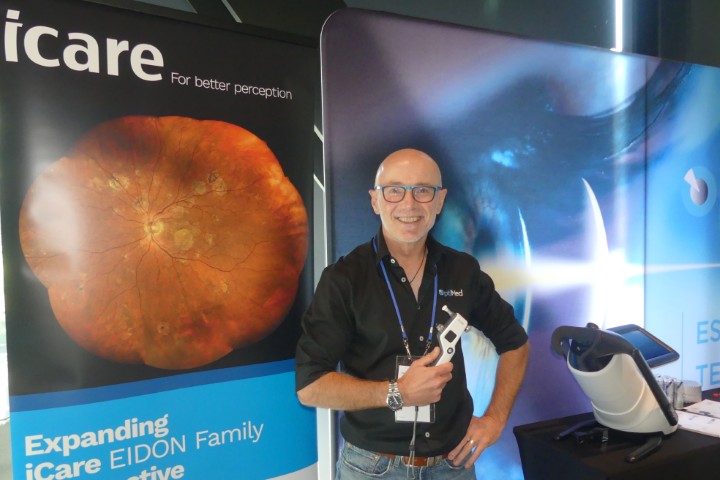Nutraceutical supplements for eye health?
Intense exposure to light, intense metabolic activity and high oxygen tension render the human eye particularly vulnerable to oxidative damage at all levels from the ocular surface and dry eye, cornea, anterior chamber, crystalline lens and back to the retina, macula and optic nerve. Hence compounds with strong antioxidant capabilities are under the spotlight as a potential treatments to slow eye damage and ageing by reducing the production of reactive oxygen and nitrogen species (ROS and RNS) in the eye.
Similarly, naturally found “alternative” antibiotics, such as New Zealand manuka honey extract, are being studied for ocular applications, particularly now with the potential of antibiotic resistance becoming worrisome.
There is also a growing trend towards people turning towards “natural health” alternatives for treating their ailments but, of course, the issue with this is often the lack of evidence-based research to support the manufacturer’s claims. But now, some more enlightened nutraceutical manufacturers, are approaching researchers and funding their studies to legitimise their product claims. Our recent work with Manuka Health has already led to the development of an exciting eyelid night cream treatment for blepharitis. Here are some of the more promising natural products also on our radar that could also become effective and respected supporters of eye health with appropriate funding support and well-designed studies.
Krill oil: a recent paper by Deinema et al (1) compared oral krill oil, fish oil and a placebo (olive oil) for treating dry eye disease (DED). Krill oil came out on top and the researchers hypothesised that was because krill oil is a phospholipid which makes it more bioavailable than the triacylglyceride of fish oil. They also noted that krill oil contains astaxanthin (AXT) which is a powerful natural antioxidant and anti-inflammatory. Of course, krill is a very important part of the marine food chain so it would need to have been ethically farmed to avoid hungry whales!
Astaxanthin (AXT): a Kiwi company called Supreme Health (formerly Supreme Biotechnology) farms the green algae Haematococcus pluviallis, which produces AXT to protect itself from environmental stresses such as excessive sunlight and dryness. AXT is a marine carotenoid closely related to lutein and zeaxanthin and it has the strongest antioxidant (AO) activity of all of the carotenoids (2), as well as having immunomodulatory characteristics. Funding is currently being sought to investigate whether various AXT-containing nutraceutical “recipes” could be effective in treating dry eye disease (DED), presbyopia, cataract, and age-related macular changes.
Saffron: Saffron is a culinary spice derived from parts of the Crocus sativus flower. It contains the compounds crocin and crocetin, which are derivatives of carotenoids and, again, are powerful antioxidants with antiapoptotic characteristics. A 2010 study by Falsini et al (3) found that saffron supplementation for three months improved retinal flicker sensitivity and best-corrected visual acuity (BCVA) in 25 subjects with early age-related macular degeneration (AMD) compared to a placebo.
Turmeric: another spice from the herbal plant, Curcuma longa, with multifunctional medicinal properties, turmeric contains curcumen which when concentrated has antioxidant, antifungal, antimicrobial and Cox-2 inhibiting anti-inflammatory properties. A review paper by Nasri et al (4) noted that curcumen already has a good reputation in China and India for treating diabetes, kidney disease, cancer and arthritis. Ocular applications have now just started to be studied.
Castor oil: is derived from the seeds of the castor bean plant (Ricinus communis). The use of castor oil goes back as far as the ancient Egyptians, who used it to treat eye irritations and as a natural skin care remedy with antibiotic properties. On the advice of a colleague who already has a patient successfully using it around her eyes, we are embarking on a pilot study this year to see if high-grade, sterile castor oil might also be beneficial in treating anterior blepharitis.
This is by no means an exhaustive list, as there are many vitamins and trace elements that also have the potential to benefit eye health. With increased understanding of the antioxidant and antibiotic properties of some of these “natural” compounds, there is a lot of potential for producing a new generation of novel and effective eye treatments.
References
- Deinema LA et al. A randomised, double masked, placebo-controlled clinical trial of two forms of omega-3 supplements for treating dry eye disease. Ophthalmol. 2017;124(1): 43-52.
- Ambati RR et al. Astaxanthin: sources, extraction,stability,biological activities and its commercial applications- a review. Mar.Drugs. 2014; 12: 128-152.
- Falsini B et al. Influence of saffron supplementation on retinal flicker sensitivity in early age-related macular degeneration. IOVS. 2010; 51(12): 6118-6124.
- Nasri H et al. Turmeric: a spice with multifunctional medicinal properties. J.HerbMed.Pharm. 2014; 3(1): 5-8.
*Grant Watters (MScOptom) is an honorary teaching fellow in the Department of Optometry and Vision Science and an honorary research fellow in the Department of Ophthalmology at the University of Auckland


























